Books by Rocío Varela-Pousa
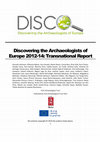
by Heleen van Londen, Joao Tereso, Rocío Varela-Pousa, Danica Staššíková-Štukovská, Andris Sne, Marjo Schlaman, Karin Scharringhausen, Eva Parga-Dans, Ain Mäesalu, Michaela Mácalová, Gavin MacGregor, Andrew Lawler, Katheriin Liibert, Tina Kompare, Nele Kangert, Jan Frolík, Mariana Diniz, Cláudia Costa, Kerri Cleary, Efthymia Alphas, Vesna Pintarič Kocuvan, Irena Lazar, Kenneth Aitchison, Tine Schenck, Katharina Möller, and Raimund Karl Between 2012 and 2014 representatives from 23 organisations in 21 European countries worked toget... more Between 2012 and 2014 representatives from 23 organisations in 21 European countries worked together in the Discovering the Archaeologists of Europe 2014 project to gain insight into the profile of the archaeological profession and labour market in those countries. The results can be compared with those of a predecessor Discovering the Archaeologists of Europe project, undertaken in 2006-08,
Employment. Across the 21 participating states, it is calculated that a total of over €1 billion is spent on professional archaeology every year, with the majority of that expenditure being on the salary costs of the estimated 24,740 people who work as archaeologists in these countries. This group of professionals represents 0.006% of the combined total workforces of those states. In many states, the absolute numbers employed in archaeology has fallen significantly over the previous six years. It is estimated that approximately 33,000 archaeologists now work across Europe as a whole.
Growth of the sector. Across Europe, organisations employing archaeologists have typically become smaller over the five years prior to this project, and employers are very cautious about predicting future growth.
Nature of the workforce. A slight majority (50.3% to 49.7%) of archaeologists are women. The proportion of women in the workforce has increased over the six years since 2006-08 from 45.9%. On average, European archaeologists are 40 years old. Very few European archaeologists are disabled – 1.1% of the total number of workers for whom data were available, a reduction from 1.5% in 2006-08.
Countries of Origin. 94% of archaeologists work in their own countries of origin, 5% are from other EU states and 1% from elsewhere in the world. Overall, this shows a slight decline in sectoral transnational mobility, as in 2006-08 more archaeologists were working away from their countries of origin.
Qualifications. In every participating state, it is normal for people working in archaeology to hold a degree – on aggregate, 94% of European archaeologists are graduates and the majority (69%) are postgraduates. 90% of archaeologists gained their highest qualifications in the countries in which they now work, with 9% obtaining those qualifications elsewhere in Europe (and 1% elsewhere in the world). When compared with the figures from 2006-08, this shows that archaeologists are increasingly educationally mobile.
Salaries. In twelve of the 21 participating states, archaeologists were paid less than the national average for all workers. An average figure of €24,901 was calculated as the mean salary earned by an archaeologist, but this is relatively meaningless as average salaries vary enormously between counties, with Danish archaeologists earning on average nine times the amount earned by their peers in Bosnia and Herzegovina.
Nature of the work. 78% of the archaeologists for whom data were available worked full-time and 22% part-time. This is a marked change from 2006-08, when the percentages were 86% full-time and 14% part-time. 63% of archaeologists held permanent contracts at the time of the research, while the remaining 37% of workers had time-limited contracts.
Structures. As was identified in the predecessor project in 2006-08, archaeological practice in the participating states is organised on different models, with varying levels of commercial activity balanced against state agency engagement. This is often linked to the funding basis of archaeological practice (variation both on the basis of funding from the state or from private sector industries, and on whether delivery is achieved by the state or by the private sector). Different states define who can be considered to be an archaeologist in different ways. Vocational education and training (VET) in the sector is almost universally delivered by universities through academic degree programmes.
Skills and Training Needs. Issues relating to specific training needs were assessed in each participating country, but, as in 2006-08, because of the variety of ways in which these questions were asked by the project partners (in order to accommodate the differing structures and approaches to archaeological work in each participating state), the information obtained cannot be usefully compared transnationally.
Trends and developments. In comparison with the predecessor work undertaken in 2006-08, the main ways that the sector has changed are that the number of jobs has decreased and the proportion of women working in the sector has increased. Furthermore, jobs are more likely to be part-time and for shorter contractual periods; archaeologists are more highly qualified, but are less well-paid in comparison with other sectors.
Papers by Rocío Varela-Pousa
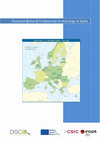
Discovering the Archaeologist of Europe, 2012
[ES] En este informe se presentan los principales resultados de la "2ª encuesta a empresas de arq... more [ES] En este informe se presentan los principales resultados de la "2ª encuesta a empresas de arqueología en España", así como las actividades previstas para la valorización de dichos resultados. El estudio se ha llevado a cabo en el marco del proyecto "Discovering the Archaeologists of Europe, 2012-2014", cuyo objetivo es definir y conocer la situación actual de la arqueología como profesión en el continente europeo (este documento se refiere únicamente al caso español). ¿Cuántos arqueólogos hay?, ¿cuántos son hombres y cuántas mujeres?, ¿qué formación poseen?, ¿para quién trabajan?, ¿qué tipo de tareas desempeñan?, ¿cuál es su salario?, ¿en qué condiciones realizan su trabajo?, ¿qué grado de movilidad geográfica existe en la profesión?, ¿cómo les afecta la actual crisis económica?, ¿qué medidas han aplicado para intentar adaptarse a esa situación?....son algunas de las preguntas a las que se pretende dar respuesta.
[EN] This report presents the main results of "2nd survey to archaeology companies in Spain" and the foreseen activities for the valorisation of such results. The study was carried out in the framework of the project "Discovering the Archaeologists of Europe, 2012-2014". The aim of the project is to identify and to define the current situation of archaeology as a profession in the continent of Europe (this document refers only the spanish case). How many archaeologists are there? How many are men and how many are women? What kind of training do they have? Who do they work for? What types of tasks do they perform? What is their salary? What conditions do they carry out their work in? To what extent is there geographical mobility in this profession? How have they been affected by the current economic crisis? What steps have they taken to attempt to adapt to this situation? These are some of the questions which we hope to answer.
by Heleen van Londen, Rocío Varela-Pousa, Tine Schenck, Eva Parga-Dans, Andrew Lawler, Kerri Cleary, Irena Lazar, Raimund Karl, Cláudia Costa, Karin Scharringhausen, Marjo Schlaman, Ain Mäesalu, Katheriin Liibert, Katharina Möller, Nathalie Vossen, and Alessandro Pintucci Culture Programme European Commission, 2012
Between 2012 and 2014 representatives from 23 organisations in 21 European countries worked toget... more Between 2012 and 2014 representatives from 23 organisations in 21 European countries worked together in the Discovering the Archaeologists of Europe 2014 project to gain insight into the profile of the archaeological profession and labour market in those countries. The results can be compared with those of a predecessor Discovering the Archaeologists of Europe project, undertaken in 2006-08.
Complutum, 2011
[ES] En este artículo se presentan los resultados de la primera encuesta dirigida a empresas de a... more [ES] En este artículo se presentan los resultados de la primera encuesta dirigida a empresas de arqueología en España que conforman la primera base de datos sobre la oferta arqueológica. En ella se recopila información social y económica sobre esta actividad comercial lo que permite identificar el impacto de la actual crisis económica pero también las oportunidades que se presentan al sector.
[EN] This article presents the results of the first survey of archaeological companies in Spain. Through these results the first data base about this business has been constructed. Information collected allows developing a descriptive study about this commercial activity; it also includes an approximation to the effects of the current economic crisis and the opportunities of this sector.
STATEMENTS by Rocío Varela-Pousa
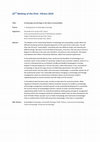
Contributing for a Sustainable Archaeology: The impact of the Big Recession on Commercial Archaeo... more Contributing for a Sustainable Archaeology: The impact of the Big Recession on Commercial Archaeology and Heritage activities compels us as archaeologists to rethink the way we undertake archaeological practice and develop our profession. If you have got any ideas, initiatives, or case studies to experience new modes of existence of archaeological activity, come to present them in the session “Archaeology and Heritage on the Way to Sustainability”. The session will take place in the the 22nd Annual Meeting of the EAA (European Association of Archaeologists) to be held in Vilnius (Lithuania) from August 31 to September 4, 2016. The session statement can be found at the following link: http://eaavilnius2016.lt/wp-content/uploads/2015/12/116.pdf , but is also enclosed in the attached file. We encourage you to participate in this meeting, which we hope will be of interest, given the crossroads where European Archaeology is right now. Please submit your proposal through the link: https://www.eventure-online.com/eventure/welcome.form?type=abstract&congress=152_EAA&c=bd4350a3-56f9-46d1-8d66-514d76e0eb3c). The deadline for proposals is 15 February 2016. Please send this message to those people who you think might be interested. [David Barreiro, Felipe Criado-Boado, Rocío Varela-Pousa (Institute of Heritage Sciences - CSIC, Spain) and Anita Synnestvedt (University of Gothenburg, Sweden)].
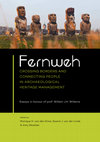
Monique van den Dries, Sjoerd van der Linden & Amy Strecker (eds). Fernweh. Crossing boundaries and connecting people in archaeological heritage management. Essays in honor of prof. Willem J.H. Willems.
The aim of this text is to provide some ideas to discuss about the economic sustainability of Arc... more The aim of this text is to provide some ideas to discuss about the economic sustainability of Archaeology in a post-crisis scenario. The text is rooted in three European-wide projects (ACE, DISCO and NEARCH). Heritage does not exist, but instead is a function of the social valuing added to it. The act of valuing comes before the act of appropriating, which is the very essence of any heritagization process. Past and present “do things” (either material or virtual), and some of these things are categorized by our culture as heritage because they are attributed a certain value (Robertson 2012, Sánchez-Carretero 2013). All societies have their own way of managing the Past, memory, tradition and cultural products; but heritage is a specific concept of European Modernity ....... (The text is part of a tribute volume for Prof. Willem Willems presented by colleagues and friends.)


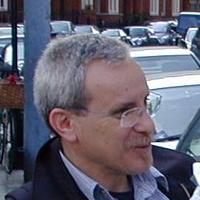



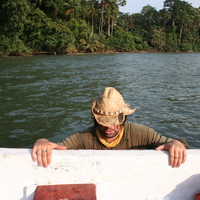


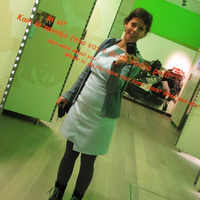

Uploads
Books by Rocío Varela-Pousa
Employment. Across the 21 participating states, it is calculated that a total of over €1 billion is spent on professional archaeology every year, with the majority of that expenditure being on the salary costs of the estimated 24,740 people who work as archaeologists in these countries. This group of professionals represents 0.006% of the combined total workforces of those states. In many states, the absolute numbers employed in archaeology has fallen significantly over the previous six years. It is estimated that approximately 33,000 archaeologists now work across Europe as a whole.
Growth of the sector. Across Europe, organisations employing archaeologists have typically become smaller over the five years prior to this project, and employers are very cautious about predicting future growth.
Nature of the workforce. A slight majority (50.3% to 49.7%) of archaeologists are women. The proportion of women in the workforce has increased over the six years since 2006-08 from 45.9%. On average, European archaeologists are 40 years old. Very few European archaeologists are disabled – 1.1% of the total number of workers for whom data were available, a reduction from 1.5% in 2006-08.
Countries of Origin. 94% of archaeologists work in their own countries of origin, 5% are from other EU states and 1% from elsewhere in the world. Overall, this shows a slight decline in sectoral transnational mobility, as in 2006-08 more archaeologists were working away from their countries of origin.
Qualifications. In every participating state, it is normal for people working in archaeology to hold a degree – on aggregate, 94% of European archaeologists are graduates and the majority (69%) are postgraduates. 90% of archaeologists gained their highest qualifications in the countries in which they now work, with 9% obtaining those qualifications elsewhere in Europe (and 1% elsewhere in the world). When compared with the figures from 2006-08, this shows that archaeologists are increasingly educationally mobile.
Salaries. In twelve of the 21 participating states, archaeologists were paid less than the national average for all workers. An average figure of €24,901 was calculated as the mean salary earned by an archaeologist, but this is relatively meaningless as average salaries vary enormously between counties, with Danish archaeologists earning on average nine times the amount earned by their peers in Bosnia and Herzegovina.
Nature of the work. 78% of the archaeologists for whom data were available worked full-time and 22% part-time. This is a marked change from 2006-08, when the percentages were 86% full-time and 14% part-time. 63% of archaeologists held permanent contracts at the time of the research, while the remaining 37% of workers had time-limited contracts.
Structures. As was identified in the predecessor project in 2006-08, archaeological practice in the participating states is organised on different models, with varying levels of commercial activity balanced against state agency engagement. This is often linked to the funding basis of archaeological practice (variation both on the basis of funding from the state or from private sector industries, and on whether delivery is achieved by the state or by the private sector). Different states define who can be considered to be an archaeologist in different ways. Vocational education and training (VET) in the sector is almost universally delivered by universities through academic degree programmes.
Skills and Training Needs. Issues relating to specific training needs were assessed in each participating country, but, as in 2006-08, because of the variety of ways in which these questions were asked by the project partners (in order to accommodate the differing structures and approaches to archaeological work in each participating state), the information obtained cannot be usefully compared transnationally.
Trends and developments. In comparison with the predecessor work undertaken in 2006-08, the main ways that the sector has changed are that the number of jobs has decreased and the proportion of women working in the sector has increased. Furthermore, jobs are more likely to be part-time and for shorter contractual periods; archaeologists are more highly qualified, but are less well-paid in comparison with other sectors.
Papers by Rocío Varela-Pousa
[EN] This report presents the main results of "2nd survey to archaeology companies in Spain" and the foreseen activities for the valorisation of such results. The study was carried out in the framework of the project "Discovering the Archaeologists of Europe, 2012-2014". The aim of the project is to identify and to define the current situation of archaeology as a profession in the continent of Europe (this document refers only the spanish case). How many archaeologists are there? How many are men and how many are women? What kind of training do they have? Who do they work for? What types of tasks do they perform? What is their salary? What conditions do they carry out their work in? To what extent is there geographical mobility in this profession? How have they been affected by the current economic crisis? What steps have they taken to attempt to adapt to this situation? These are some of the questions which we hope to answer.
[EN] This article presents the results of the first survey of archaeological companies in Spain. Through these results the first data base about this business has been constructed. Information collected allows developing a descriptive study about this commercial activity; it also includes an approximation to the effects of the current economic crisis and the opportunities of this sector.
STATEMENTS by Rocío Varela-Pousa
Employment. Across the 21 participating states, it is calculated that a total of over €1 billion is spent on professional archaeology every year, with the majority of that expenditure being on the salary costs of the estimated 24,740 people who work as archaeologists in these countries. This group of professionals represents 0.006% of the combined total workforces of those states. In many states, the absolute numbers employed in archaeology has fallen significantly over the previous six years. It is estimated that approximately 33,000 archaeologists now work across Europe as a whole.
Growth of the sector. Across Europe, organisations employing archaeologists have typically become smaller over the five years prior to this project, and employers are very cautious about predicting future growth.
Nature of the workforce. A slight majority (50.3% to 49.7%) of archaeologists are women. The proportion of women in the workforce has increased over the six years since 2006-08 from 45.9%. On average, European archaeologists are 40 years old. Very few European archaeologists are disabled – 1.1% of the total number of workers for whom data were available, a reduction from 1.5% in 2006-08.
Countries of Origin. 94% of archaeologists work in their own countries of origin, 5% are from other EU states and 1% from elsewhere in the world. Overall, this shows a slight decline in sectoral transnational mobility, as in 2006-08 more archaeologists were working away from their countries of origin.
Qualifications. In every participating state, it is normal for people working in archaeology to hold a degree – on aggregate, 94% of European archaeologists are graduates and the majority (69%) are postgraduates. 90% of archaeologists gained their highest qualifications in the countries in which they now work, with 9% obtaining those qualifications elsewhere in Europe (and 1% elsewhere in the world). When compared with the figures from 2006-08, this shows that archaeologists are increasingly educationally mobile.
Salaries. In twelve of the 21 participating states, archaeologists were paid less than the national average for all workers. An average figure of €24,901 was calculated as the mean salary earned by an archaeologist, but this is relatively meaningless as average salaries vary enormously between counties, with Danish archaeologists earning on average nine times the amount earned by their peers in Bosnia and Herzegovina.
Nature of the work. 78% of the archaeologists for whom data were available worked full-time and 22% part-time. This is a marked change from 2006-08, when the percentages were 86% full-time and 14% part-time. 63% of archaeologists held permanent contracts at the time of the research, while the remaining 37% of workers had time-limited contracts.
Structures. As was identified in the predecessor project in 2006-08, archaeological practice in the participating states is organised on different models, with varying levels of commercial activity balanced against state agency engagement. This is often linked to the funding basis of archaeological practice (variation both on the basis of funding from the state or from private sector industries, and on whether delivery is achieved by the state or by the private sector). Different states define who can be considered to be an archaeologist in different ways. Vocational education and training (VET) in the sector is almost universally delivered by universities through academic degree programmes.
Skills and Training Needs. Issues relating to specific training needs were assessed in each participating country, but, as in 2006-08, because of the variety of ways in which these questions were asked by the project partners (in order to accommodate the differing structures and approaches to archaeological work in each participating state), the information obtained cannot be usefully compared transnationally.
Trends and developments. In comparison with the predecessor work undertaken in 2006-08, the main ways that the sector has changed are that the number of jobs has decreased and the proportion of women working in the sector has increased. Furthermore, jobs are more likely to be part-time and for shorter contractual periods; archaeologists are more highly qualified, but are less well-paid in comparison with other sectors.
[EN] This report presents the main results of "2nd survey to archaeology companies in Spain" and the foreseen activities for the valorisation of such results. The study was carried out in the framework of the project "Discovering the Archaeologists of Europe, 2012-2014". The aim of the project is to identify and to define the current situation of archaeology as a profession in the continent of Europe (this document refers only the spanish case). How many archaeologists are there? How many are men and how many are women? What kind of training do they have? Who do they work for? What types of tasks do they perform? What is their salary? What conditions do they carry out their work in? To what extent is there geographical mobility in this profession? How have they been affected by the current economic crisis? What steps have they taken to attempt to adapt to this situation? These are some of the questions which we hope to answer.
[EN] This article presents the results of the first survey of archaeological companies in Spain. Through these results the first data base about this business has been constructed. Information collected allows developing a descriptive study about this commercial activity; it also includes an approximation to the effects of the current economic crisis and the opportunities of this sector.